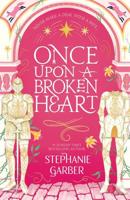Publisher's Synopsis
Fundamentals and Applications of Chemical Process Safety, offers students and practitioners a more fundamental understanding of safety and the application required to safely design and manage today's sophisticated processes. Chemical processes have grown more complex, so have the safety systems required to prevent accidents. It introduces basic concepts relating to chemical hazards, risk, and ethics. Examples of problems that can occur with inadequate process design, improper process modification, and disregard for ethical decision making. Chemical Hazards in Industry is focusing on safety and health hazards surrounding chemicals encountered in chemical and related industries. This textbook is designed for a dedicated course in chemical process safety. The chapter on chemical reactivity provides the information necessary to identify, characterize, control, and manage reactive chemical hazards. Chapter on safety procedures and designs includes new content on safely management, and specific procedures including how work permits, lock-tag-try, and vessel entry. Subjects Include Inherently safer design Toxicology and industrial hygiene Toxic release and dispersion models Fires and explosions, and how to prevent them Reliefs and relief sizing Hazard identification Risk assessment Safe designs and procedures Case histories and Chemical Process Safety. This edition, is an ideal reference for professionals. It can be used for both graduate and undergraduate instruction. Through this book you can heighten your awareness, understanding and appreciation of chemical plant accidents. The primary objective of this textbook is to present the important technical fundamentals of chemical process safety. The emphasis on the fundamentals will help the student and practicing scientist to understand the concepts and apply them accordingly. We continue to believe that a textbook on safety is possible only with both industrial and academic inputs. The industrial input ensures that the material is industrially relevant. The academic input ensures that the material is presented on a fundamental basis to help professors and students understand the concepts. The content has been extensively written to today's techniques and procedures.
























